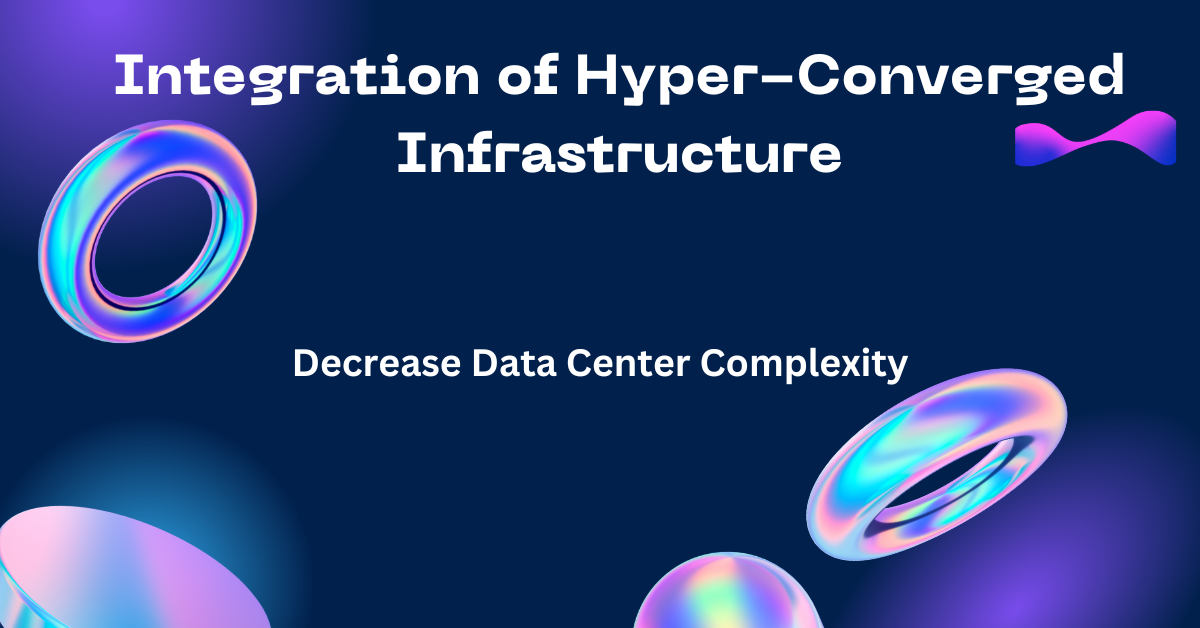What is Hyperconverged infrastructure ?
The hyperconvergence IT infrastructure combines software, networking, storage, and computing into a unified system to decrease data center complexity and increase scalability. Hyperconverged platforms are systems that meet this criterion. Its software-centric design tightly integrates and virtualizes all these resources in a single system, often built using x86 hardware.
Hyperconverged architectures frequently run on standard off-the-shelf servers, including software-defined storage, virtualized networking, and a hypervisor for virtualized computing. Our 4-layer stack’s powerful performance, cost reductions, and rack space savings have eliminated the requirement for an external SAN. Instead, this is a design for an actual software-define data center (SDDC). Due to this, it is sometimes referred to as hyperconverged infrastructure (HCI).
You can buy a hyperconverged system as standalone software to install on your existing x86 servers, or you can buy an appliance solution from a single vendor that is fully integrated. Standalone software and hyperconverged equipment have equal ability to provide a full range of features and benefits. The main factors that set them apart are costs, benefits, and deployment possibilities.
What Is the Process of Hyper-Converged Infrastructure?
Many components merges into a single, tightly integrated system via HCI. These elements consist of the following:
HCI pools all the storage resources into a single entity using software-defined storage (SDS). As a result, it makes it possible for businesses to manage their storage as a single system, doing away with the requirement for distinct storage silos.
Virtualization: HCI employs virtualization to create a virtualized environment by abstracting the physical hardware. Thanks to it, organizations can run numerous virtual machines (VMs) on a single physical server.
Networking: HCI enables the communication between virtual machines and the outside world with software-defined networking (SDN). Organizations may control their network infrastructure as a single system thanks to SDN.
Management: To control every part of the infrastructure, HCI uses a single management console. It enables businesses to oversee and manage every aspect of their infrastructure from a single pane of glass.
Hyperconverged infrastructure advantages
You can obtain the following advantages or benefits by selecting hyper-converged infrastructure for your workloads:
Data center consolidation
Replace hardware servers, storage arrays, and network switches with a single, cost-effective system that is simple to manage and highly scalable.
Flexibility
Adapt to the complex use cases and demanding applications of today’s digital world by growing your system quickly.
Simplicity
Simplify the deployment, use, and effective management of virtual NAS, SAN, and S3 object storage.
Cost-Effectiveness
Minimize your data center footprint & the economic implications of acquiring and maintaining traditional hardware equipment. Use hyper-converged technologies to reduce TCO and increase ROI.
Integrated Storage
NAS, SAN, and S3 object storage expertise may all be combine into a single, simple-to-manage system that is just as effective as the dedicated storage systems.
Agility
Accelerate the performance of mission-critical applications like MySQL, NoSQL, and other relational databases by quickly spinning up workloads, provisioning storage, and spinning up workloads.
Cloud-Friendly
Build a cloud-native hyper-converged system by integrating your preferred cloud (Microsoft, Amazon, or any S3-compliant cloud) with hyper-converged technologies.
